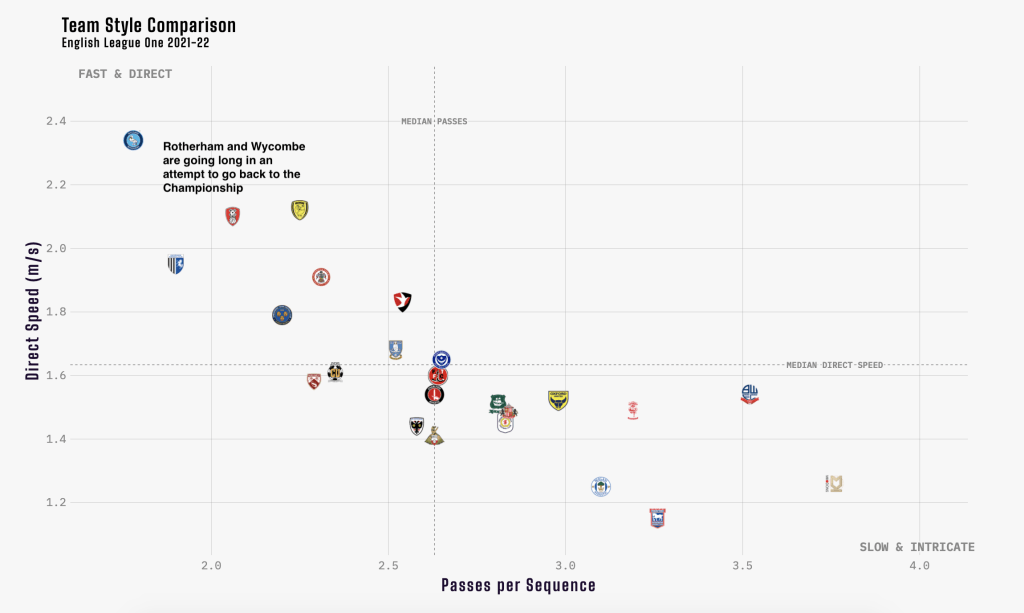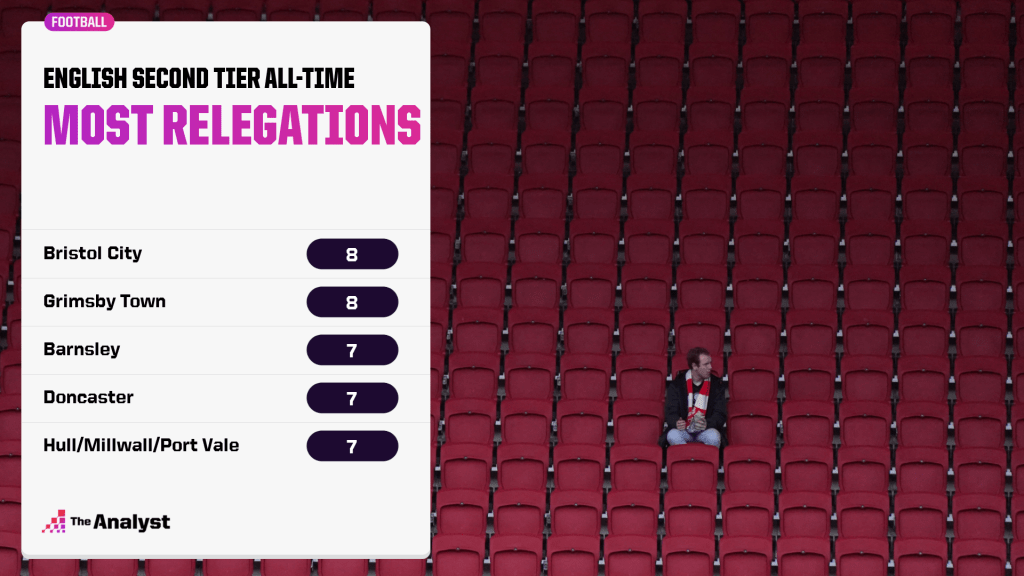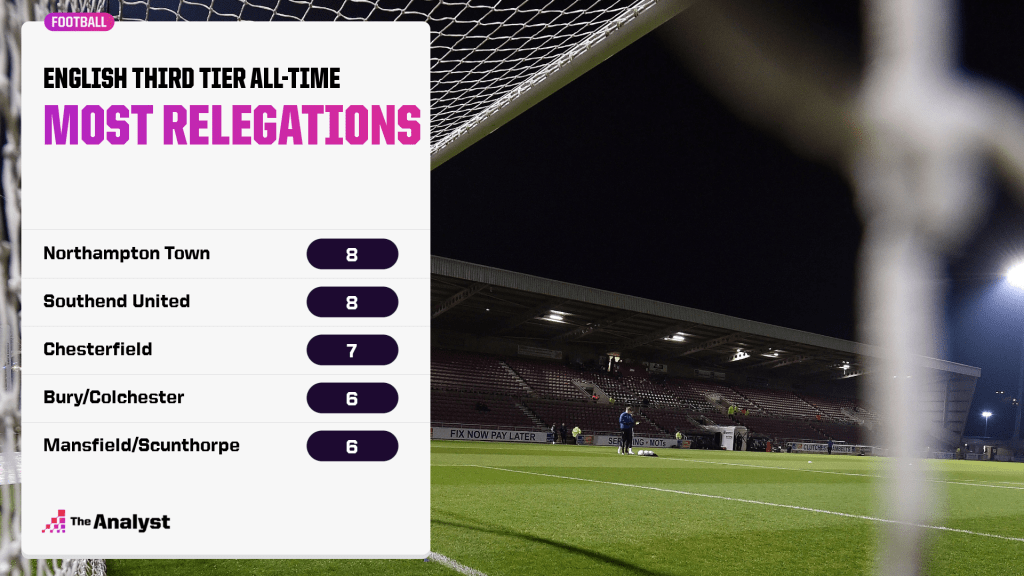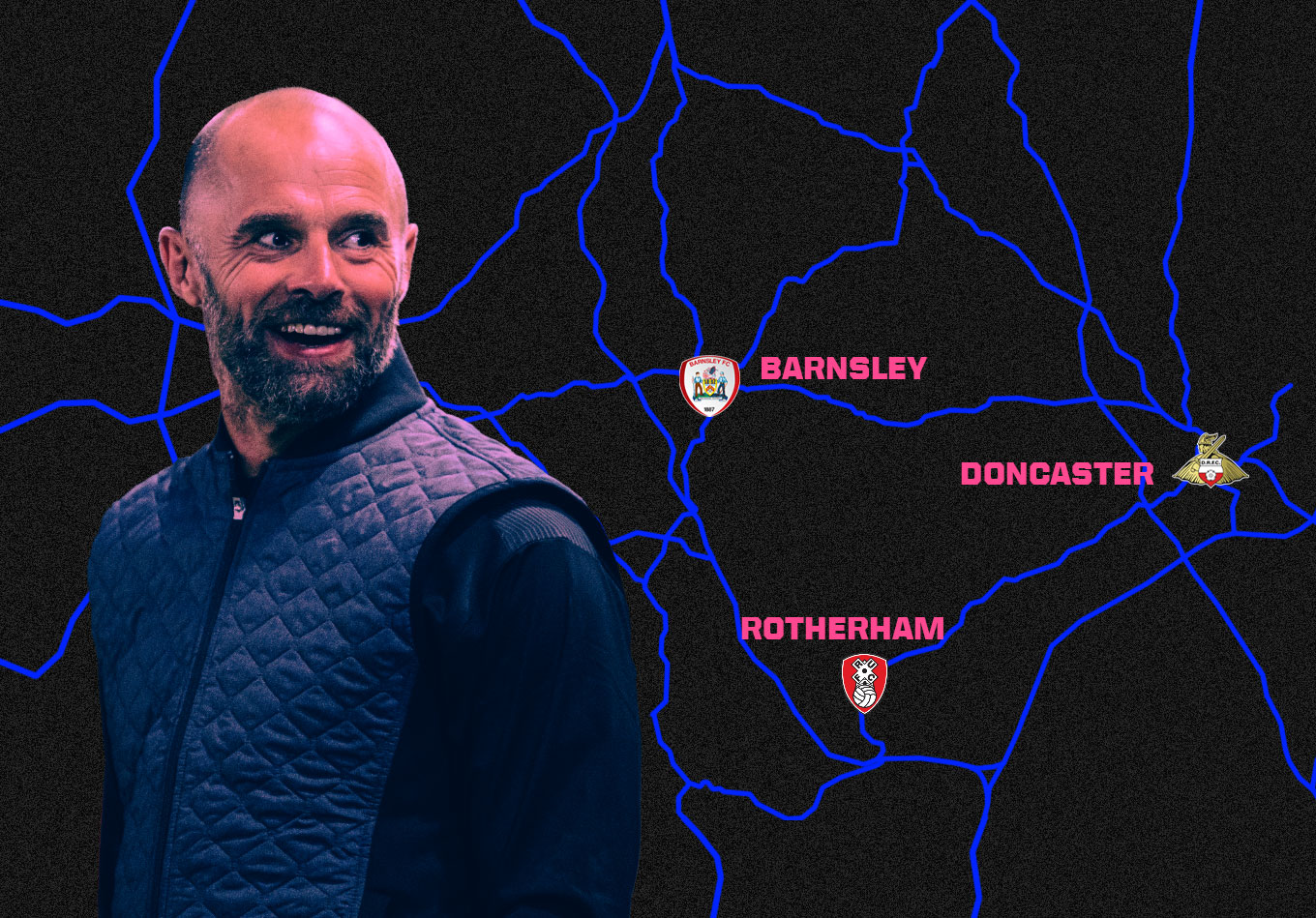In a recent dive into the data behind the growing disparity between English football’s top two divisions, The Analyst theorised the emergence of the ‘Premierchamp’ – a mini, pseudo-league comprising teams seemingly too strong for the Championship but never quite good enough to establish themselves in the Premier League. Does that phenomenon extend beyond the uppermost reaches of the pyramid, though? With its four tiers, England’s professional league system is the most extensive in the world – but is it together? Or is the yo-yoing of Norwich et al indictive of a more Pangaea-like break-up?
What goes up must come down: the basic gist of gravity, right? Well, yes – but also the underlying principle of Rotherham United, the Norwich of the Championship/League One frontier. Since relegation from the second tier in 2017, the Millers have gone up, down, up and down again – and, based on their rampant form over the last couple of months, Paul Warne’s side are likely to keep the sequence going this season.
Rotherham’s 2018 promotion via the play-offs particularly stands out for the fact that they had come down with the lowest points total in Championship history (23 from 46 games). They fared considerably better in 2018-19 and 2020-21, finishing four points below the dotted line with 40 in the former and just two points from safety with 42 in the latter – although Wycombe Wanderers ended their maiden second-tier campaign a point closer to 21st-placed Derby.

Since 2011-12, six clubs have suffered multiple relegations from the Championship. Wigan join Rotherham on three, with Doncaster, Barnsley (what is it with that 80-odd-square-mile patch of Yorkshire?), Bolton and Charlton having all gone down twice in that time. Perhaps surprisingly given the financial basket case the Championship has become, only one of those relegations came with the caveat of a points deduction (Wigan’s in 2019-20). That said, such punishment did condemn Portsmouth in 2011-12 and Sheffield Wednesday last season – while it will take a miracle for Derby to overcome their 21-point deficit this term.
Barnsley have twice returned to the second tier – doing so at the first time of asking in 2018-19 – and Wigan’s four-year up-down-up-down sequence came to an end last season as the Latics tussled with off-field turmoil to survive in League One by a single point. Doncaster bounced back in 2013-14, as did Bolton in 2016-17 – although they only lasted one and two seasons respectively and have remained below the Championship ever since, with Bolton verging on liquidation in 2019 – while Charlton won the play-offs three years after their 2016 relegation, only to go straight back down.
Over the last decade, eight promoted teams have been unable to clear the hurdle of their first season (back) in the Championship. Five of those eight instances have occurred in the last five seasons. Rotherham and Wycombe’s relegations last term made it the first campaign since 2013-14 – when Doncaster finished 22nd and one-season wonders Yeovil bottom – in which two promoted sides have been relegated.

Why are we using 2011-12 as our starting point? Well, if a week is a long time in football, then 10 years must be a whole aeon – but also, something happened then which hasn’t been done since and doesn’t look it will be any time soon: Southampton won their second successive promotion to go from League One to the Premier League in the space of two seasons, a year after Norwich had pulled off the same feat.
Since the campaign after the Saints when marching up as runners-up behind Reading, 2012-13, only one team has even made the Championship play-offs at the first time of asking: Brentford, who finished fifth in 2014-15 – and subsequently lost 5-1 on aggregate to Middlesbrough in the semi-finals. 2017-18 Millwall were last newcomers to record a top-half finish, ending the campaign in eighth – while Preston came 11th in 2015-16, Wolves 7th in 2014-15, Bournemouth 10th in 2013-14, and Charlton 9th in 2012-13.
The average finishing position of promoted sides is getting lower. From 2011-12 to 2015-16, it was a pretty comfortable 14th; by 2020-21, that figure had dropped to a nervier-looking 18th. For the last two seasons alone – during which three out of six promoted teams have fallen straight through the trapdoor – the average stands at a nervier-still 20th.
There is a pattern here. Like the Premier League above it (albeit not to quite the same dispiriting extent), the Championship appears to be becoming tougher and tougher to stay in. Some newcomers do manage it – evidently – but three of the last six to do so have finished in the bottom third of the table (18th or lower) – and none higher than 2018-19 Blackburn’s 15th place.
Blackpool are currently going well in their first Championship campaign since 2014-15 – when they succumbed to the first of back-to-back relegations which would see them tumble down to League Two – but will it last? The Tangerines are squeezing out results and their expected goals data pins them as a bottom-six team.
As we have already seen, it is relatively common for relegated teams to make an immediate return to the Championship – but will that change as the second tier gets harder to hack and if League One becomes increasingly top-heavy? From Accrington Stanley to Ipswich Town and Morecambe to Sunderland, footballing worlds collide in the third tier – but several of the ostensibly smaller fish are more than holding their own against ex-Premier League might, and you could make a case for near enough half the division being promotion contenders this season.
Nonetheless, whoever does go up come May will be heading to a league which is arguably as unaccommodating as it’s ever been. Never in the Premier League era have all three sides promoted to the second tier gone straight back down – but the way things are going, it feels like a matter of when, not if, that happens.

Staying in League One is altogether less of a mission – or at least it was. Between Wycombe and Chesterfield going down in 2011-12 and Tranmere Rovers* in 2019-20, not a single League One newcomer was relegated – and rarely were they tipped to be, such was the reputation the transition from fourth tier to third tier gained: less of a giant leap than a small step.
Northampton Town and Swindon Town failed to make it stick after returning to League One last season. Both look good value to yo-yo back up, though, currently sitting second and fourth in League Two respectively.
Indeed, in only two of the last 10 seasons (2012-13 and 2015-16) have the four teams promoted from League Two not contained at least one relegated to the division a year previously. Ten of the last 39** sides relegated from League One (25%) have made an immediate return to it – and a further two have lost in the play-offs.
All things considered, there is generally not a whole lot between the bottom of League One and the top of League Two in terms of quality. And there is arguably just as little – if not even less – between the bottom of League Two and the top of the National League. In fact, such is the standard in the highest tier of non-League football these days, Torquay United manager Gary Johnson – a veteran of three EFL promotions (and one relegation) recently argued that it should be absorbed into the EFL.
We know that the Premier League is pulling away from the Championship – and the numbers point to the Championship doing similar to League One. But between League One and League Two and League Two and the National League, there is a certain unity.
And this is where the English football pyramid is not like those triangular-surfaced wonders of Egypt: if the top were to break off, you could just add another level at the bottom. Maybe Gary Johnson was onto something after all.
*Tranmere were one of the biggest victims of the COVID-truncated 2019-20 campaign, settled on points per game (PPG)
**Bury’s expulsion from the EFL in 2019 meant that only three teams were relegated from League One in 2019-20
